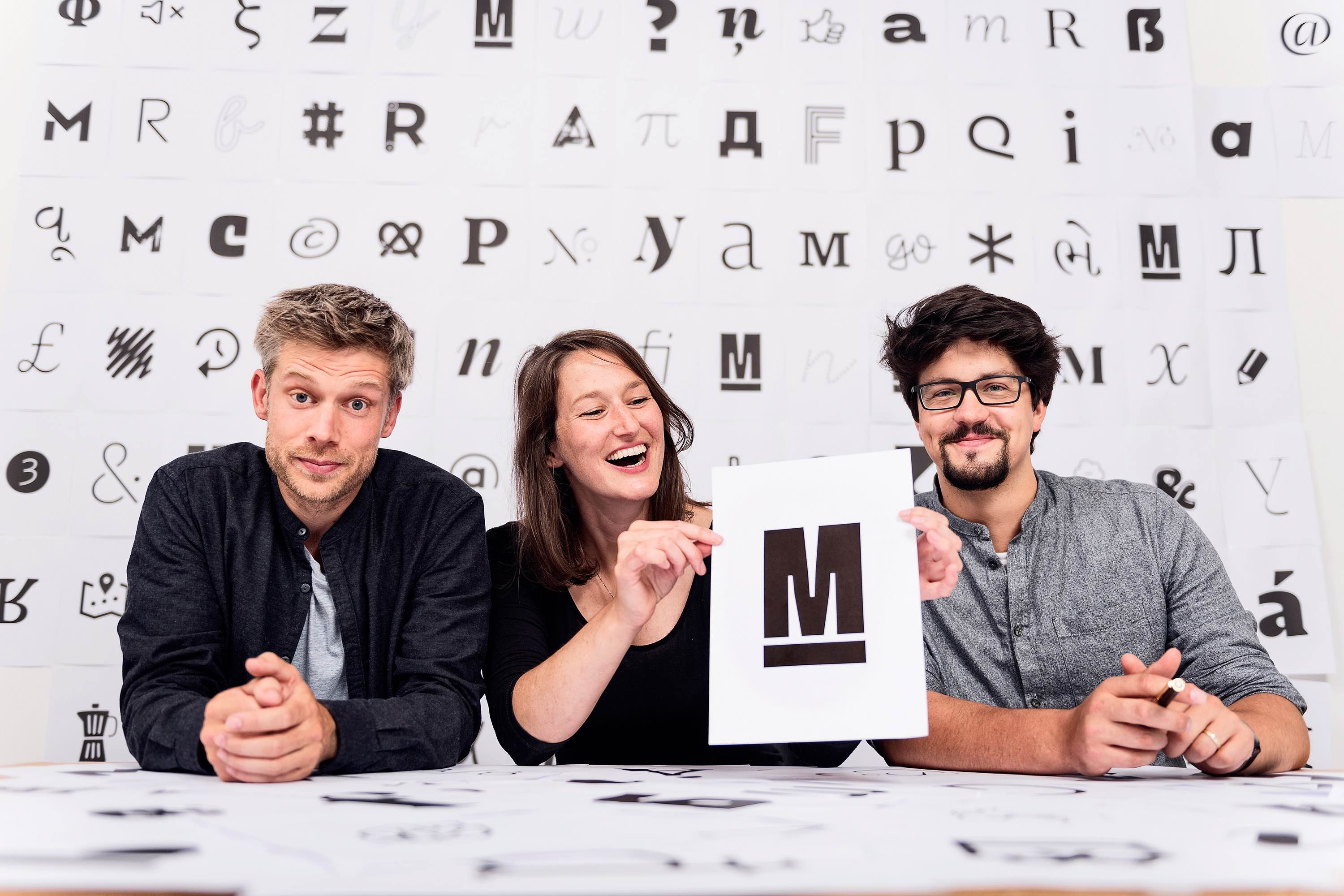Set Sail Studios has grown in popularity over the years and it’s now known for being one of the most reputable sources for realistic brush fonts. Established by Sam Parrett, Set Sail Studios is an online store that provides graphic designers with tons of design assets for their projects.
Sam’s typography has made it into our Top Ten Fonts of the Year listings for the past four years in a row: 2018, 2017, 2016, and 2015.
One look at his portfolio is all it takes to see that Sam has an undeniable talent for crafting expressive letter sets that are rich in personality and individual flair. Having worked in graphic design for the music industry — a sector that prizes both of those qualities, and highly — Sam’s type designs consistently stand apart from the rest.
We recently spoke with Sam to learn more about his workflow and personal experiences working in a highly-competitive font industry.
Sam works from a home office, using a combination of an iMac Pro and MacBook Pro, an iPad Pro, a Brother A3 scanner “and a heck of a lot of pens, paintbrushes, ink, and paint!” he said. His exact methods and specific software usage wholly depend on the font he’s creating.
Most of Sam’s fonts begin as handmade drawings on paper, which are later scanned, vectorized, and built digitally in Fontlab Studio 5. He also uses Fontself when he’s creating Opentype SVG fonts, Adobe Illustrator when he’s building clean sans or sans serif letter sets, or Procreate on his iPad, using an Apple Pen to draw clean fonts by hand, digitally.
Sam admitted that font software comes with a fairly steep learning curve. “The biggest technical challenge I faced by far is learning and understanding the font software which can be daunting at first,” Sam told us. “Fontlab Studio, in particular, isn’t the most user-friendly software and took me a while to get a grasp of.”
Where there’s a will, there’s always a way. Sam encourages others to take advantage of YouTube videos and tutorials because that’s how he was able to learn the things he couldn’t figure out on his own. He said that even now, he still only knows about half of what the software is actually capable of, although one would never guess that from looking at his work.
Sam finds designing type to be an incredibly gratifying endeavor. “Working purely on your own ideas from conception to completion, seeing them come to life and then used and enjoyed by others is a truly rewarding feeling,” he said. “There’s nothing quite like spotting your own font when you’re out and about!”
Sam noted that releasing a best-seller can indeed be very lucrative for a type designer, but those successes are hit and miss. “One of the major difficulties I find is continually developing new and interesting fonts in a saturated and fast-moving market,” Sam explained. “Some fonts will often go completely unnoticed.”
He also told us that issues with copyright and font piracy can be burdensome. When we hear the term, “piracy,” our minds just sort of immediately think of it in terms of media — music, television shows, or movies. The truth is that font piracy is a big problem for a lot of type designers. They can go after copyright infringers and pirates through lawsuits, of course, but that can be costly and take valuable time away from their creative pursuits.
The constant search for free or low-priced typography can also lead to font designers being undervalued, Sam told us. “I’d like to see marketplaces promoting fair pricing and doing their best to avoid a ‘race to the bottom’. Everyone loves a good discount/sale but constantly pushing extremely low prices and massive bundles will mean everyone in the industry loses in the long run,” Sam explained. (See more on this topic: “Beware the Bundle” by YouWorkForThem founder Michael Paul Young – 2015)
Speaking of technological advances, Sam’s been rather at the forefront of OpenType SVG font design. These types of fonts embed information like colors, gradients, patterns, or textures directly into the characters, while still operating pretty much the same way as regular fonts do.
“Applying Opentype-SVG technology to brush fonts allowed me to use bitmap images for each letter, rather than vector paths. This meant that I could include all of those finer brush details in my fonts, totally built in as a transparency,” Sam explained. “It definitely shook-up the brush font scene, added a totally new dimension to them and allowed for some really creative ideas to pop up – my SVG fonts Opulent and Avallon, in particular, have been really popular.”
Sam notes that OpenType SVG fonts “are fantastic but do have their limitations,” he said, adding, “it’s quite possible they could end up being a bit of a fad due to the poor app support.” Overall, font technology hasn’t changed much during the past two decades and Sam finds it difficult to predict what the future of type design might bring.
“I’ve seen a few web-based apps pop up where you can ‘design your own’ font in real-time simply by adjusting sliders,” Sam told us. “It’s cool but you have to choose from a bunch of pre-baked font templates which are pretty generic, and some of the vector paths turn out horrible. I don’t think they’ll be taking over the font industry any time soon but I could definitely see these sort of applications being implemented into design software.”
He definitely feels that fonts need greater technical support, especially in mobile and tablet devices. “I’m not sure about Android but as an iOS user, there’s no way to ‘globally’ install fonts to my devices and has to be done individually for each app,” he noted. “Getting the actual font on there in the first place is a pain, too — sort it out, Apple!”
Sam offered some advice to aspiring type designers and those who may be considering a career in typography one day. “First and foremost you have to love letters and lettering, otherwise the process will most likely be pretty boring.”
Sam said it’s a good idea to explore graphic design, studying the basic principles of design and typography. Learning hand lettering and logo design is a good start, as is learning how to use the path tool and designing with vectors.
Still, it’s gonna take some time for a new font designer’s dreams to come true. “Be patient,” Sam said. “Find your niche. Don’t expect an instant success and don’t be disheartened if a font doesn’t sell — move on to your next project.”
Adding one last piece of advice, he said, “Kids, don’t use
drugscomic sans.” Wise words, indeed.


























